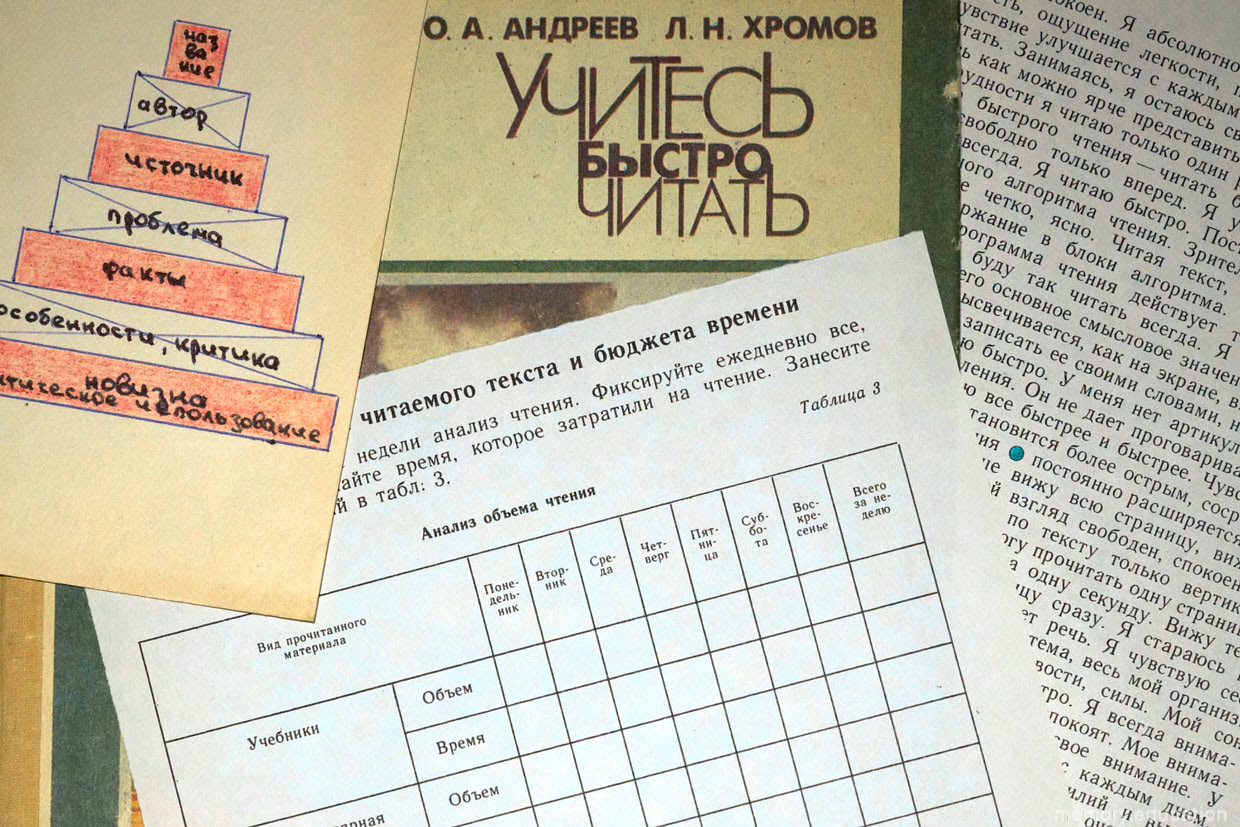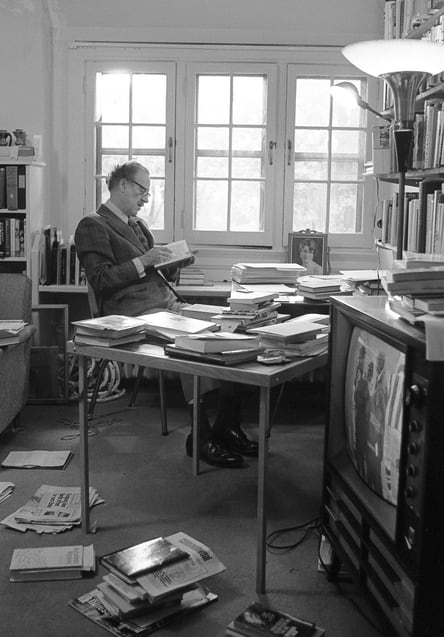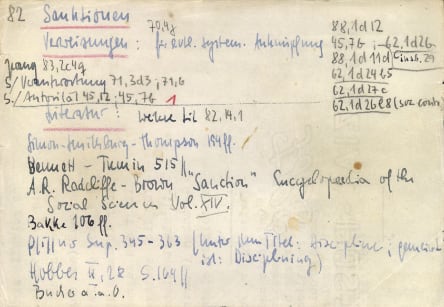Speed reading courses: how we are deceived
Speed reading training and speed reading books promise to improve memory. But that’s not true
- The “comprehension” coefficient
- How does speed reading fool us with the coefficient
- Speed reading without comprehension
- Speed Reading vs. Memorization
- Conclusion

I’ve been doing speed reading since I was 11 years old, and I know all about it. In this article, I tell you how they deceive us. And you’ll see that speed reading courses and speed reading books don’t improve memory or help memorization despite their promises.
The “comprehension” coefficient
When you come to a speed reading course, they measure your initial speed. Thoughtful courses understand that it’s not enough to just read. Students need to be persuaded that they understand what they’re reading.
To do this, they use a formula: divide the number of characters you read by the time you spend and multiply by the “comprehension coefficient.”
You are asked 10 questions and the coefficient is determined by the answers. Five out of ten questions never change.
Usually, it is:
- title;
- author;
- output information;
- the main problem;
- novelty and practical use.
Open any book: on the back of the title page or the end page, you will see an abstract with output information. Or read the book description on the website. They answer exactly those questions.
And this is where those who believed that speed reading could improve memory are deceived.
How does speed reading fool us with the coefficient
You know those 5 questions in advance because they don’t change. You turn the first page of the book, read the abstract, and you already get a “comprehension” coefficient of 0.5.
According to the logic of speed reading courses, you have already learned half of the content of the book. Relying only on natural memory, in a few days, we will not remember the output or the author’s last name if it is complicated. But in a speed reading course, this does not embarrass anyone. Because there is no going back to what was once “learned.”
There are, then, two kinds of memory: one natural, and the other the product of art. The natural memory is that memory which is imbedded in our minds, born simultaneously with thought. The artificial memory is that memory which is strengthened by a kind of training and system of discipline. But just as in everything else the merit of natural excellence often rivals acquired learning, and art, in its turn, reinforces and develops the natural advantages, so does it happen in this instance
written in 86-82 BCE
The other five questions are also no big deal: genre, plot, specifics of narration, main characters, attitude toward the work. That’s if the work is fiction.
If the text is scientific, you won’t be asked about the date, long numbers, complicated terms, or names. If they do, they will ask in general, “What part of the world did Columbus discover in 1492?” The usual fudging of results, and the client believes he has memorized the main points of the book. So much for “memory improvement” in a speed reading course.
Then we realize that we don’t feel the benefits of speed reading. What’s the use of flipping through pages quickly if you only catch the general meaning? You still don’t remember the exact information and sequence of information.
The Magical Number Seven, Plus or Minus Two. It is often interpreted to argue that the number of objects an average human can hold in short-term memory is 7 ± 2. This has occasionally been referred to as Miller’s law
I’d rather slowly but completely memorize the right book. I will “build it into my head” and use the knowledge. For me, it makes no sense to waste precious time of life on social networking challenges to “flip through 100 books in a month.” Ask those who participate what they remember afterward.

In this sense, the example of Marshall McLuhan is illustrative. He is one of the most famous and influential intellectuals of the twentieth century. McLuhan’s work is the cornerstone of the study of media theory. We have all heard of his concepts: “the Gutenberg era,” the “global village,” and “the medium is the message.”
Among other things, McLuhan was known as a proponent of speed reading. In 1967, he became interested in the idea of speed reading and took Evelyn Wood’s Reading Dynamics course. And his son Eric became an instructor in Evelyn Wood’s program.
From time to time he amazed his colleagues with claims that he could read 1,500 words a minute. One of his speed reading tricks was to read only the right-hand page. He claimed it was a reliable technique since most books are full of “redundancies.”
And yet, in his biography we read this:
“In a more candid frame of mind, he later confessed to a friend that, although he took speed reading seriously when he first attempted it, in the end he found it useful mainly for reading junk mail.”
Speed reading without comprehension
My point of view coincides with that of educationalists:
“If students ask whether they should pay to take a speed reading course, say no. Speed reading courses have not been shown to increase the efficiency of reading comprehension or an individual’s rauding (reading and auding—B. R.) rate. <...> Speed reading training is really skimming training in disguise, and tripling your apparent rate is likely to cut down your accuracy of comprehension to about one third. The super readers you hear about are super skimmers, and they fail to pass carefully constructed comprehension tests.”
Serious psychologists speak delicately, but quite definitely:
“Since the average fluent reader reads somewhere between 100 and 140 words per minute (depending on the nature of the material), speed reading is defined simply as reading at rates significantly in excess of these norms. An issue of interest here (particularly in view of the popular and expensive programmes that claim to teach this skill) is whether such rapid rates can be achieved without sacrificing comprehension. The problem is a complex one but the evidence available indicates that they cannot.”
On YouTube, you can see people allegedly reading at a speed of 100,000 characters per minute or more (I’m not kidding). A stopwatch is slipped into the frame for the entourage. They call it “PhotoReading.”
I took a course in speed reading, learning to read straight down the middle of the page, and I was able to go through War and Peace in 20 minutes. It’s about Russia.
When I see that, I think of the joke about the receptionist at the job interview:
- Are you typing fast?
- 1000 characters a minute, but you get such nonsense...
Here’s one of the tests we talked about above. This is what scientific analysis says about this PhotoReading:
“The final task given to the PhotoReading expert was to read the three chapters from the textbook on Physiology in order to take an exam from a course that used that textbook. The question was simply: Would she pass the exam? The expert took 73 minutes to PhotoRead and read the three chapters of the textbook required for the test (i.e., 361 words per minute). She PhotoRead for 9 minutes the night before taking the test. The following morning, she read the text using various rapid reading and activation techniques. She then answered the questions. She completed the 6 true/false and 30 multiple choice questions, but did not attempt to answer the fill-in-the-blank or short-answer questions. Hence, comprehension performance on the conceptual questions was 0 percent. She answered 2 of 7 multiple-choice prior knowledge questions correctly (29%). Of the text relevant questions, she answered 4 of 6 true/false questions correctly (67%), and 8 of 23 multiple-choice question correctly (35%). This performance is extremely low and only slightly above chance level performance for these types of questions (i.e., 50% and 25%, respectively). In sum, she did not pass the exam.
It is important to note that after PhotoReading the text (but before taking the test), she rated her understanding of the material as 4.5 on a 5-point scale (5 representing a good understanding). Moreover, she estimated that she would remember approximately 68 percent of the material for the test, with a grade of C+. This high level of confidence in terms of her text comprehension would have remained unshattered had she not then taken the test—after which she rated her comprehension much lower (i.e., 2).”
Notice: the test shows that speed readers sincerely believe in their abilities. The feedback from those who have taken speed reading courses is genuine. You can’t blame them for that. They are the victims themselves: first, they were deceived by speed reading courses or speed reading books, and then they deceive themselves.
I have great respect for Mark Seidenberg. He is a professor of psychology and holds academic positions at respected universities and research laboratories. Importantly for us, he is a specialist in psycholinguistics and focuses on the cognitive and neurological bases of language and reading.
In his book “Language at the Speed of Sight,” Mark writes:
“As an expert in reading rather than marketing or psychiatry, my concern is whether such systems work. Is it possible to increase reading speed and efficiency using specialized techniques? Reader: save your money. The gap between what is promised and what can be attained is huge <...>. What is claimed cannot be true given basic facts about eyes and texts. Unless we redefine reading as rapid page turning, deleting the bit about comprehension, people are as likely to read thousands of words per minute as they are to run faster than the speed of light.”
On his website, Mark has placed a guide to his book. There he is no longer constrained by the limits of the scientific edition, and he is not shy in his expressions:
“People have a deep desire to read more quickly, which has led to decades of “speed reading” schemes. These schemes do not work because they are based on false assumptions about skilled reading. <...>
Anyone can “read” thousands of words per minute if you don’t have to comprehend very much: just skim. People who claim to read thousands of words per minute with good comprehension are either bluffing or deluded. Often, they are trying to profit from their supposedly extraordinary skill. They avoid rigorous comprehension tests, however. <...>
Many people want to be able to “speed read,” but the truth is that reading speed cannot be greatly increased without compromising comprehension. “Speed reading” techniques only teach people to skim. Researchers have known this for a long time, but the market for “speed reading” products (also marketed under names like mega-reading) persists. In an attempt to drive a stake through these vampire products, I’ll explain why speed reading is impossible. These products use two approaches: either change the reader’s behavior or change how the text is displayed.”
And Mark goes on to make a convincing case for the pointlessness of the skills promoted by speed reading: “take in more information at a time;” “eliminate subvocalization;” and “stop making regressive eye movements.” Mark says the first is impossible, and the second and third make it harder to read.
Speed Reading vs. Memorization
I help people memorize information. That’s why I need to look at speed reading from this perspective.
After all, very often speed reading courses and speed reading books promise to improve memory. They say you’ll memorize what you read as fast as you read it. But, as you already understand, this is impossible.
We saw that comprehension suffers in speed reading. If you don’t understand the material, you can’t memorize it. I might be happy to memorize, but I don’t have what I need to memorize.

But there is a second reason that makes it impossible to memorize during speed reading.
Suppose we don’t believe what the experts say. We believe in the impossible and think that with a quick read we understand everything.
But even if we did understand with speed reading, we wouldn’t be able to memorize it as fast. The speed of memorization is determined by the physiology of our brain. And this speed is much lower than the speed at which people flip through books on speed reading courses.
Even after our memory training, you won’t be able to memorize faster than slow reading speed. This is exactly the speed of thoughtful reading at which serious scholars read serious books. And if you learn to memorize at slow reading speed, that’s pretty cool.
That’s why the very idea of combining “speed reading” and “memorization” is flawed.
Conclusion
Nevertheless, I am not against speed reading courses and speed reading books.
Unlike Mark Seidenberg, I am more cautious in my assessment of speed reading. I think the skills can be useful: overcoming regressions, suppressing subvocalization (internal articulation), expanding the field of vision, and highlighting main thoughts.
The last skill is especially interesting for us. Because then we use mnemonics to memorize highlighted thoughts forever and with absolute precision.
A mnemonic device, or memory device, is any learning technique that aids information retention or retrieval (remembering) in the human memory for better understanding
But I’m against the promises of “improving memory” in speed reading courses and speed reading books. They mislead people and offer nothing to help memorization.
I suggest learning to memorize first. And then you can take up speed reading if you want it so badly.
So stay tuned, and I’ll teach you how to memorize effectively. If you need to move faster, go to Training. There are both paid and completely free options there.
“Speed reading is not my specialty. I am related to it indirectly: I help memorize things that are only skimmed over in speed reading. But if you’re interested in my experience in related fields—let me know about it and I’ll write more. Share the article, and I’ll know from the backlinks how interesting it is to you”
Share
Tweet
Send
Pin
Submit
Post
Send
Comments:
Your comment will be the first.